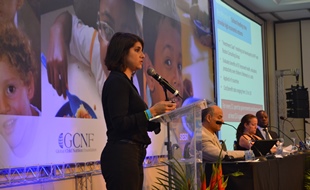 News
News  School Feeding is Crucial in Time of Crisis New Report Finds
School Feeding is Crucial in Time of Crisis New Report Finds
The first State of School Feeding Worldwide report was recently launched by the United Nations World Food Programme (WFP), providing for the first time a global picture and analysis of school feeding programmes in well-off countries as well as in developing nations, and data on how governments use school meals as a “safety net” in times of crisis.
According to the research, around 368 million children, about 1 out of every 5, get a meal at school every day in 169 developing and developed countries. Global investment in these programmes is of the order of US$ 75 billion, with most coming from government budgets. “School feeding assures that where quality education is available children are able to take advantage of the opportunity to learn” said the Executive Director of the UN World Food Programme, Ertharin Cousin.
“It’s an investment that pays off in the future with better educated, stronger and healthier adults and also a critical safety net to prevent the most vulnerable from suffering in times of crisis”.
In the past five years, at least 38 countries have scaled-up their school feeding programme in in response to a crisis, be it related to food prices, conflict, natural disaster or financial volatility. “During the food and fuel crises in 2008 many governments struggled to protect the most vulnerable from hunger and looked to school meals to achieve that. In the current recession even wealthy nations are examining how school meals can prevent families sliding deeper into poverty and hunger,” said State of School Feeding Worldwide lead author Carmen Burbano.
School feeding provides an array of benefits in terms of education, nutrition, income transfer and local agricultural production. For every $1 spent by governments and donors WFP estimates that at least $3 is gained in economic returns, according to the report. WFP has been operating school meals programmes in developing countries for about half a century.
In 2012, WFP provided meals or nutritious snacks in school for 24.7 million children in 63 countries, including take home rations for 1.3 million girls and 500,000 boys – providing an incentive for poor families to keep their children in class, rather than pull them out to work in the fields in the factories or in the home. WFP supports national governments to improve their capacities to implement quality, sustainable school feeding programmes – allowing a transition from WFP-run programmes to national owned and operated school meals programmes.
The State of School Feeding Worldwide was launched at the largest annual meeting of school feeding experts, co-hosted by the Global Child Nutrition Foundation and WFP’s Centre of Excellence Against Hunger in Brazil.
- Download the report The State of School Feeding Worldwide 2013.




